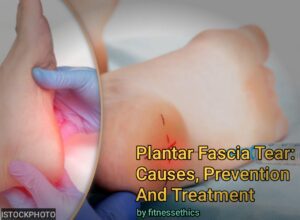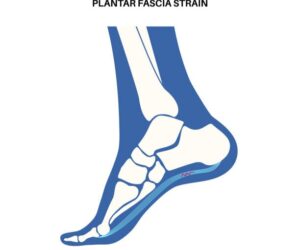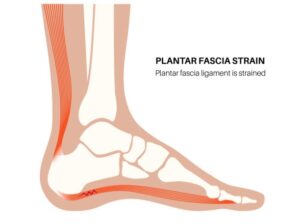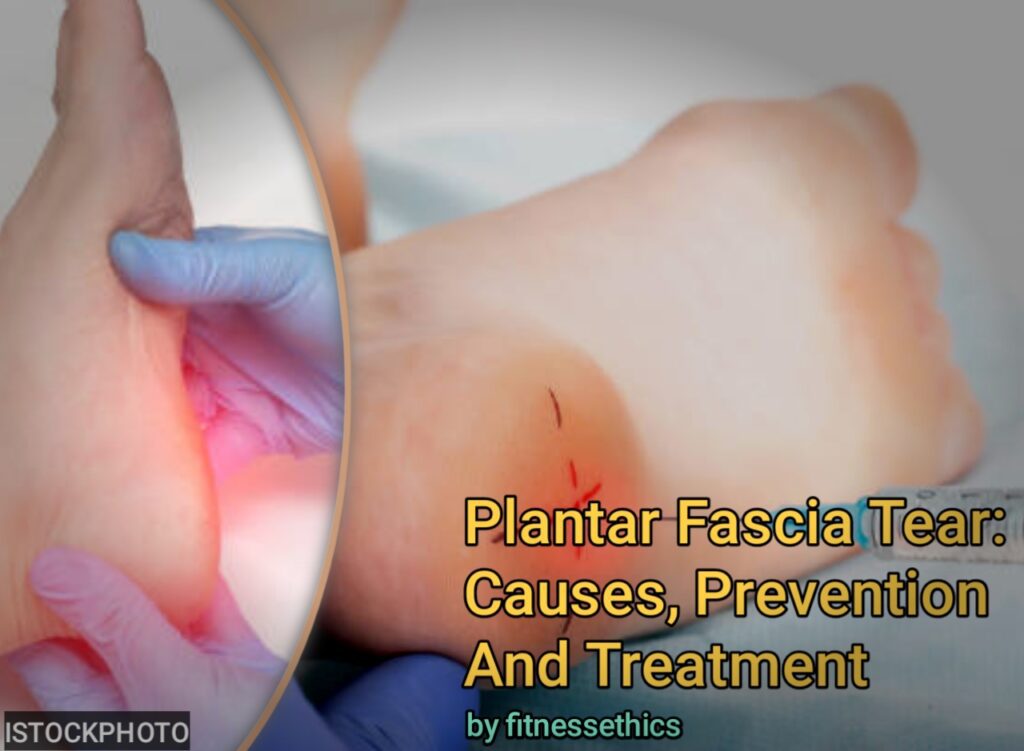A plantar fasciitis tear is a pain in the bottom of the foot, which can be very painful and can cause extreme discomfort and distress. A Plantar fasciitis tear is something that can really affect your daily lifestyle. Even while applying treatment, patients will be advised to use crutches and be immobile. The pain can actually become worse when you stand up in the morning. I can tell you that there is nothing quite like getting out of bed and feeling like there is a nail in the bottom of your foot.
What Is Plantar Fascia?


Plantar fasciitis is the inflammation of a thick band of tissue that connects the heel bone to the toes. The inflamed tissue runs across the bottom of the foot. With that tissue inflamed, you won’t be able to work properly without hopping or using crutches.
How do you know if you have plantar fasciitis?
- Pain on the bottom of the foot near the heel
Series of pains underneath your foot, just close to your heel. This pain gets worse as the days go by. Victims are advised to visit their healthcare providers after they’ve observed certain signs of pain in that region. Plantar fasciitis doesn’t really happen at any age, but age is one of the major risk factors. The condition is most common in people between the ages of 40 and 60. Certain types of exercise Activities that place a lot of stress on your heel and attached tissue — such as long-distance running, ballet dancing, and aerobic dancing — can contribute to the onset of plantar fasciitis.
Pain with the first few steps after getting out of bed in the morning, or after a long period of rest, such as after a long car ride, If you have plantar fasciitis, you shouldn’t be driving unless you’ve been relieved of the condition. As mentioned, it can get worse when you try to stand in the morning.
- Greater pain after (not during) exercise or activity
You can feel even greater pains after you’ve worked out or during heavy physical activity. If you feel severe pain in your heel region, you should seek medical attention.
What Causes Plantar Fascia?
- High-impact exercises
High impact exercises like these are exercises that stress the joints. They are movements that put a high level of impact on your joints. High-impact exercises tend to involve a lot of jumping and jolting movements, which often involve both of your feet coming off the ground at the same time.
- Overuse
- Improper footwear
Wearing footwear that’s perhaps too tight or one that makes you feel discomfort and distress
- Walking mechanics modifications
- Obesity
- The Normal Aging Process
Plantar fasciitis doesn’t really happen at any age, but age is one of the major risk factors. The condition is most common in people between the ages of 40 and 60. Certain types of exercise
- Bone Spurs
A bony growth that develops on the edge of a bone, sometimes causing symptoms.
- Lack of flexibility of the calf, Achilles tendon, and plantar fascia
How Can Plantar Fascia Be Prevented?
Well, you just have to avoid the causes. Though there are some risk factors like age and obesity that might not be avoided, avoiding others should put you on the safer side. Low-impact exercises such as stationary bicycling, elliptical training, water exercise, rowing machine, and yoga should be put in place of theseHigh-impact exercises.These low-impact exercises are not necessarily for weight loss but can be useful for mental relaxation. Wear shoes that are fit and that you can take a walk with. High heels can cause foot injuries; high heels place all of the wearer’s weight on the ball of the foot; arch strain, heel pain, toe injuries, sprained ankles, postural and gait problems.
How Can Plantar Fascia Tear Be Treated?

You should consult your healthcare provider if you’re feeling any discomfort in your heel region. Your healthcare providers can provide various treatment methods, which include:
- Ultrasound
- Medical laser
- Soft tissue manipulation
- Graston Techniques
- Home remedies for heel pain
- Stretching of the lower extremity
[starbox]

